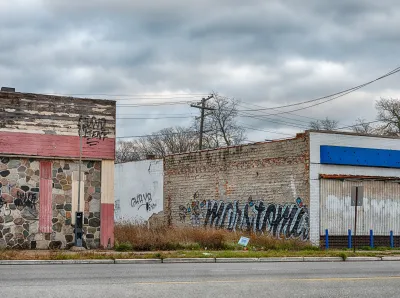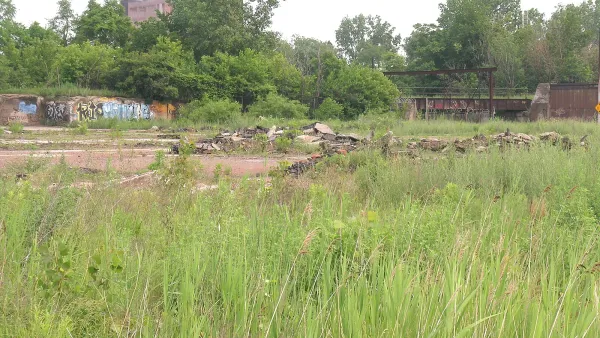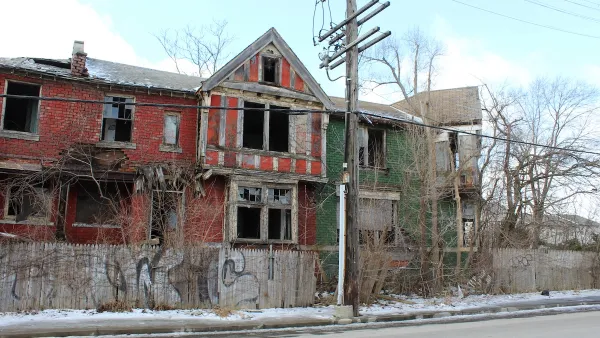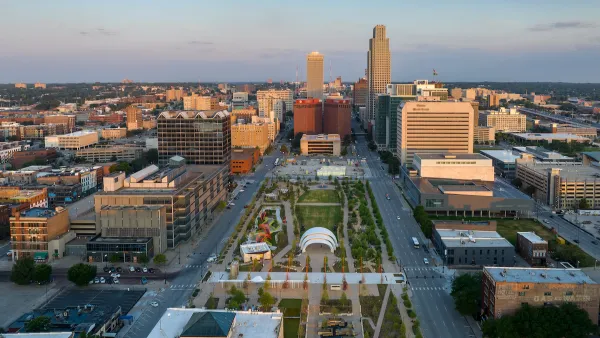Detroit Mayor Mike Duggan proposes hiking property taxes for vacant land and buildings while lowering the rate for occupied homes and businesses in a split tax plan he contends will resolve many of Detroit's blight and high property tax woes.

On Wednesday, Detroit Mayor Mike Duggan proposed hiking the city's property taxes for vacant land and buildings while lowering the rate for occupied homes and businesses in a split tax plan he contends will resolve many of Detroit's blight and high property tax woes.
The proposal, dubbed the Land Value Tax Plan, would increase taxes on land while reducing taxes on homes and structures by an expected 30 percent, or roughly $38 million total. This would apply to every neighborhood in Michigan's largest city, require, no application, and never expire.
If approved by the Michigan Legislature and later by Detroit voters, Duggan said, the plan would provide relief to homeowners who have been struggling under the burden of high taxes, encourage further neighborhood growth and hold land speculators accountable. Duggan laid out his plan Wednesday during an annual address at the Detroit Regional Chamber's Mackinac Policy Conference.
Currently, private owners own roughly 30,000 neglected lots that Duggan on Wednesday described as “cheap lottery tickets” that bet on an increase in land value with no actual investment in the property. The city is forced to cut grass in the lots and remove garbage to spare surrounding neighbors while the property owners pay about $25-30 a year in taxes.
“This is what is driving me nuts,” Duggan said. “In Detroit, blight is rewarded and building is punished.”
Under Duggan's plan, the average homeowner will see a $250 annual tax reduction, according to the mayor's office.
Owners of active businesses and land that is in productive use will also see their tax bills go down, depending on the taxable value of their assets. Currently, vacant residential lots in the city are taxed at an average of $25 annually, according to the mayor's office.
The program, which would be phased in over three years starting in 2025, would on average increase the millage rate on vacant land from 86 to 124 mills and lower the millage rate on a home from 86 to 60 mills, Duggan told The Detroit News.

National Parks Layoffs Will Cause Communities to Lose Billions
Thousands of essential park workers were laid off this week, just before the busy spring break season.

Retro-silient?: America’s First “Eco-burb,” The Woodlands Turns 50
A master-planned community north of Houston offers lessons on green infrastructure and resilient design, but falls short of its founder’s lofty affordability and walkability goals.

Delivering for America Plan Will Downgrade Mail Service in at Least 49.5 Percent of Zip Codes
Republican and Democrat lawmakers criticize the plan for its disproportionate negative impact on rural communities.

Test News Post 1
This is a summary

Test News Headline 46
Test for the image on the front page.

Balancing Bombs and Butterflies: How the National Guard Protects a Rare Species
The National Guard at Fort Indiantown Gap uses GIS technology and land management strategies to balance military training with conservation efforts, ensuring the survival of the rare eastern regal fritillary butterfly.
Urban Design for Planners 1: Software Tools
This six-course series explores essential urban design concepts using open source software and equips planners with the tools they need to participate fully in the urban design process.
Planning for Universal Design
Learn the tools for implementing Universal Design in planning regulations.
EMC Planning Group, Inc.
Planetizen
Planetizen
Mpact (formerly Rail~Volution)
Great Falls Development Authority, Inc.
HUDs Office of Policy Development and Research
NYU Wagner Graduate School of Public Service





























